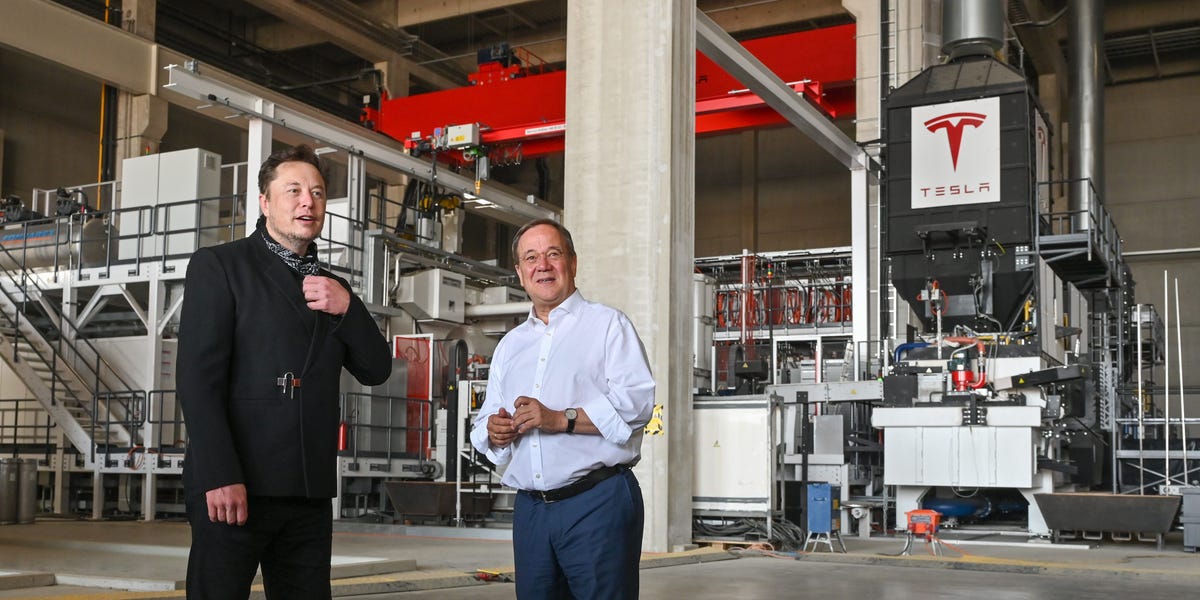- Traditional auto companies were supposed to catch Tesla in the EV market.
- This past week shows how badly Detroit has failed with EVs.
- The whole auto market is getting tougher. Tesla looks better prepared than Ford and GM.
The traditional auto industry has had more than a decade to build viable electric vehicle businesses. It’s shocking that these companies are still failing so badly at it.
Tesla released the Model S, its first full production EV, in 2012. The company almost went bankrupt, so you can forgive Ford, General Motors, Toyota, Honda and others for sticking with gas-powered vehicles for a while.
Then, Wall Street analysts spent years issuing sell ratings on Tesla while hedge funds shorted the stock. Again, maybe the traditional auto companies get a pass.
However, at some point in the past half decade or so it became clear that Tesla had worked out how to make and sell EVs at a healthy profit. In the third and fourth quarters of 2018 combined, when Model 3 sales were really ramping up, the company generated net income of more than $450 million.
At that point, the rest of the industry piled in. The consensus view was that they would catch Tesla and competition would become fierce and Elon Musk’s company would again descend into trouble.
This quarter shows how wrong those predictions have been.
WeWork-level losses
Ford’s EV business lost $1.3 billion, before interest and taxes, in the third quarter of 2023 – on just $1.8 billion of revenue. That’s almost WeWork-level losses. Ford also postponed $12 billion of EV investments last week.
GM and Honda just scrapped a $5 billion plan to make affordable EVs. GM also abandoned its EV production target through mid-2024, and is delaying the manufacturing of several EV models to try to improve the profitability of these new operations.
The challenge is the same for both Detroit giants: They haven’t worked out how to make EV’s profitably.
There’s no longer an excuse
A few years ago, these companies had an easy excuse: Tesla was losing billions of dollars making EVs so this business just wasn’t really viable for anyone. Toyota’s CEO is still saying EVs are not viable.
The problem now is that Tesla and other pure EV manufacturers have shown that electric vehicles are in fact very profitable when made properly.
China’s BYD just reported a record quarterly profit of $1.4 billion, up 82% from a year earlier.
Tesla made net income of $1.85 billion on revenue of $23 billion in the period. The company’s power storage business was really profitable. But even without that, the auto business is now highly profitable: Tesla got the average cost of its vehicles down to about $37,500 in Q3, while the average selling price was roughly $44,500, according to the company and Goldman Sachs estimates.
That average price shows how far Tesla has come. It’s about $4,000 cheaper than the $48,808 average price of vehicles in the US, according to Kelley Blue Book data from June.
Tesla’s cost advantage
Tesla’s cost and price advantage is really on show when you read a recent Insider review and comparison between the Mercedes-Benz EQE SUV and Tesla’s Model Y.
The Model Y Long Range version has a 330 mile range on a full charge and costs $48,490 before federal incentives. The Mercedes is more luxurious, but its range is 279 miles and the price starts at $80,000.
Very few people are going to pay $30,000 more for an EV that can drive 60 fewer miles on a full charge.
This shows up in US EV sales data. In Q3, Tesla sold almost 157,000 EVs. The next closest was Ford, which sold almost 21,000, according to Kelley Blue Book data. Mercedes sold about 10,000 EVs in the US in the period.
Price cuts = losses. Except for Tesla.
Detroit has responded with EV price cuts to try to compete with Tesla. The result: Losses have piled up.
Tesla has drastically cut prices, too. Its profit margins have slipped but they are still very healthy. Its auto business had a gross profit margin of more than 16% in Q3.
Part of Detroit’s problem is that many traditional auto companies are often still trying to make EVs in existing factories that were designed for gas-powered vehicles. Or, they sometimes wedge battery packs into existing vehicle designs, like the Ford F-150 Lightning electric truck.
GM is even having trouble making battery packs in a new factory it owns with LG Energy, limiting production of some EVs.
The whole auto market is getting tougher. Who’s ready?
The future looks challenging for the whole US auto industry. Higher interest rates have made car purchases more expensive. Auto loan defaults are at records, which means a flood of repossessed cars are likely headed to the market. That could pressure new car prices even more.
Executives at traditional automakers are suggesting that this proves EVs are not viable. But this type of lower demand will hit gas-powered vehicles just as much as electric ones.
Who is prepared the best for this tough new period? These numbers from Goldman Sachs give you a good idea:
-
Tesla will have more than $19 billion cash at the end of 2023 and long-term debt of just $2.4 billion, according to Goldman estimates.
-
Ford will have about $24 billion in cash and long-term debt of almost $89 billion.
-
GM will have just under $27 billion in cash and long-term debt of $80 billion.
Read the full article here





